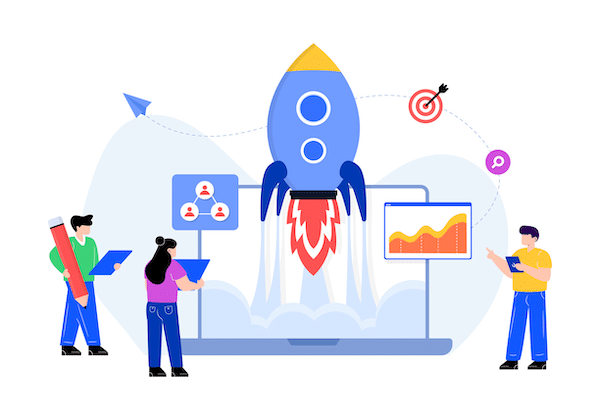As a business analyst, good knowledge and understanding of how to create effective user stories are essential for successful project preparation. In this article, we provide a comprehensive guide on how to write user stories that will save your development team time and are easy for stakeholders to understand.
Contents
Good user stories drive successful business outcomes, but how can business analysts create effective ones? The user story is a key element of agile development, and as a Business Analyst (BA), you should master the core abilities needed to write great ones. And as an added step, you should know the story mapping technique to make them easy to understand for stakeholders, customers, and other project team members in and out of your company.
User stories are at the heart of every agile project because they convey valuable information about customer personas, their needs, and functionality that’s essential for software development. It is therefore important for business analysts to understand the fundamentals of agile development when crafting them.
Writing good user stories that meet your customer’s specifications requires plenty of experience, skills, and understanding. In this article, we will look into some fundamental techniques that BAs need to master to craft great user stories within their projects, and find answers to the following questions:
- Why do need to write user stories as a business analyst?
- What are the benefits of using user stories in software development?
- How do you write effective user stories?
Business analysts are responsible for gathering and organizing business requirements that can be used by the development team. There are different methodologies for conducting a requirements analysis of the product to be developed. One of these is the business analyst technique, which already takes an agile approach when creating user stories. When writing requirements from a customer perspective, sufficient information must be conveyed in a comprehensible and complete way. The method that performs the horizontal and vertical sorting and prioritization of these on a board is called story mapping.
Start with AI
Or let’s start at the beginning:
What is a User Story?
A user story is the smallest unit of work in the Agile framework. Instead of focusing on what the system should do, the user story describes the benefit to the end user and what they want from your product. It does not describe a product feature but defines an end goal that the user wants to achieve when using the software. User stories are written in plain language that’s easy for everyone to understand.
What BA work phase requires writing user stories?
User stories can be written at any stage of the iterative process in agile projects, but they are primarily related to product discovery. A Business Analyst, however, writes them in the discovery phase and then works with the team to create a product backlog that now fully describes the features to be developed during the project.
How to write user stories as a Business Analyst?
Create user personas, validate their needs
First, the groups of users who will use the software need to be clearly defined. It is very important to understand the potential real users, their pain points, needs, and user goals. This may require conducting user research and interviews – preferably by UX researchers. As a result, we can get an accurate picture of user experience and user journeys, and also of the typical user personas themselves, all of which will help us to create great user stories.
Define the main functionalities with epics
Epics are the major components listed, more or less corresponding to product features. They can be created before user stories are written, but may also reveal the need for additional epics. Organizing user stories into epics is useful for creating a product backlog, i.e. planning the order in which the development team will build and release features. Epics also provide a higher-level view of the application’s functionality than user stories.
Writing User Stories
After defining users and epics, the project’s business analyst starts writing user stories using the same formula:
- As a [type of user or role], I want to [end goal] so that I [do this].
A good user story should answer all these questions:
- What problem does this solve for the specific group of users?
- Why do they want or need this solution?
- How would they use this solution, and how often?
A good user story should be easy to understand, independent, negotiable, estimable, and testable.
What are the benefits for Business Analysts of creating user stories?
User stories offer many advantages over creating a list of product features and then implementing them step by step.
Thanks to Agile Methodology, user stories focus on the problems and needs of users. In addition, user stories require collaboration, so that the customer, different stakeholders, and developers can add their own perspectives and solution suggestions to the product being developed. By discussing and prioritizing these, a better product will certainly be created.
Creating – or generating user stories with the help of AI – allows you as a Business Analyst to prioritize the user requirements, and makes it clear to everyone the order of value of requirements in terms of business value.
As an agile Business Analyst, you need to gather information from the end users and know their needs very well. At the same time, you must collaborate with multiple stakeholder teams to clarify the requirements and conditions, and finalize the business model. You should always be one or two steps ahead of the development team to ensure their progress and prioritize and estimate the backlog items with them in time.
Try it right now!
